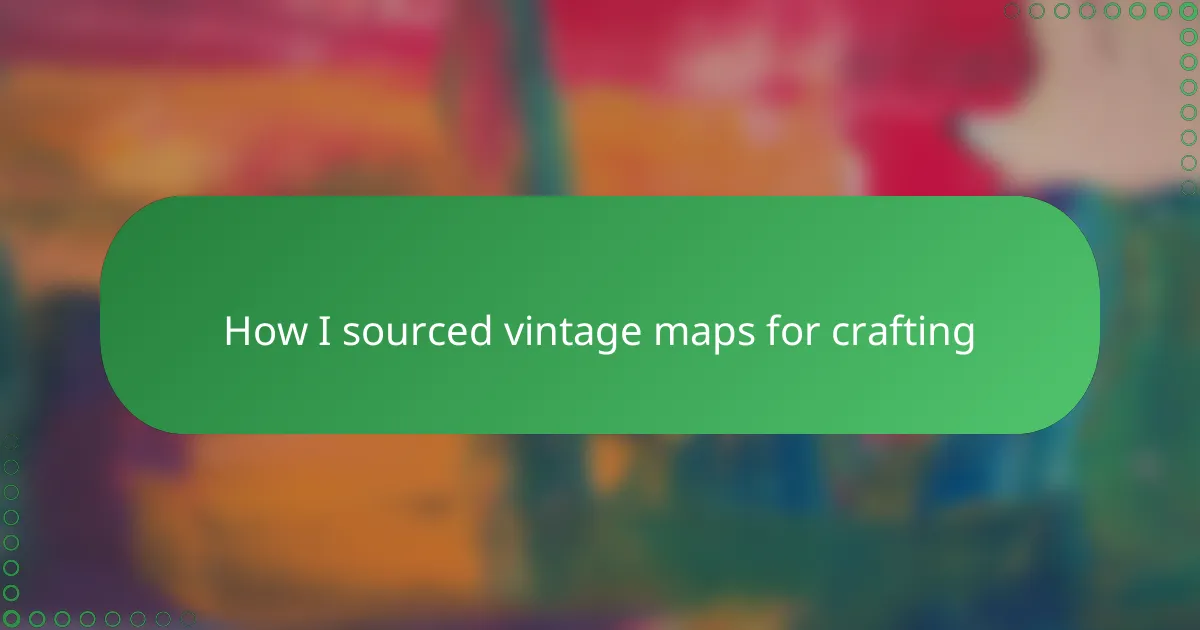Key takeaways
- Handmade paper crafts combine creativity with a personal touch, allowing for a calming and satisfying artistic process.
- Vintage maps add character and depth to crafts, with their historical context offering inspiration and nostalgia.
- Proper evaluation of map quality, condition, and texture is essential for successful crafting projects; gentle handling and cleaning improve the outcome.
- Unique crafting ideas using vintage maps can include making gift tags, decoupage boxes, and bookmarks that evoke personal memories and stories.

Introduction to handmade paper crafts
Handmade paper crafts have always fascinated me because they combine creativity with a tangible, personal touch. When I first folded my own paper, I realized how calming and satisfying the process could be—like bringing a piece of art to life with my own hands. Have you ever noticed how a simple sheet of paper can transform into something so unique and expressive?

Understanding vintage maps for crafting
When I first discovered vintage maps, I was instantly drawn to their intricate details and faded colors—they felt like windows into another time. There’s something magical about using materials that have a story; each crease or discoloration adds character to my crafts. Have you ever held something old and wondered about the journeys it has witnessed?
Understanding vintage maps goes beyond just admiring their look. I learned that the paper quality, printing technique, and age all affect how well they respond to cutting, folding, or gluing. It’s fascinating to think how maps made decades ago were designed to be durable yet delicate in their own way.
I realized that appreciating the historical context of a vintage map makes crafting with it even more meaningful. Knowing that the places depicted might have changed or disappeared gives my projects a sense of nostalgia and depth. Isn’t it incredible how something printed long ago can inspire creativity in the present?
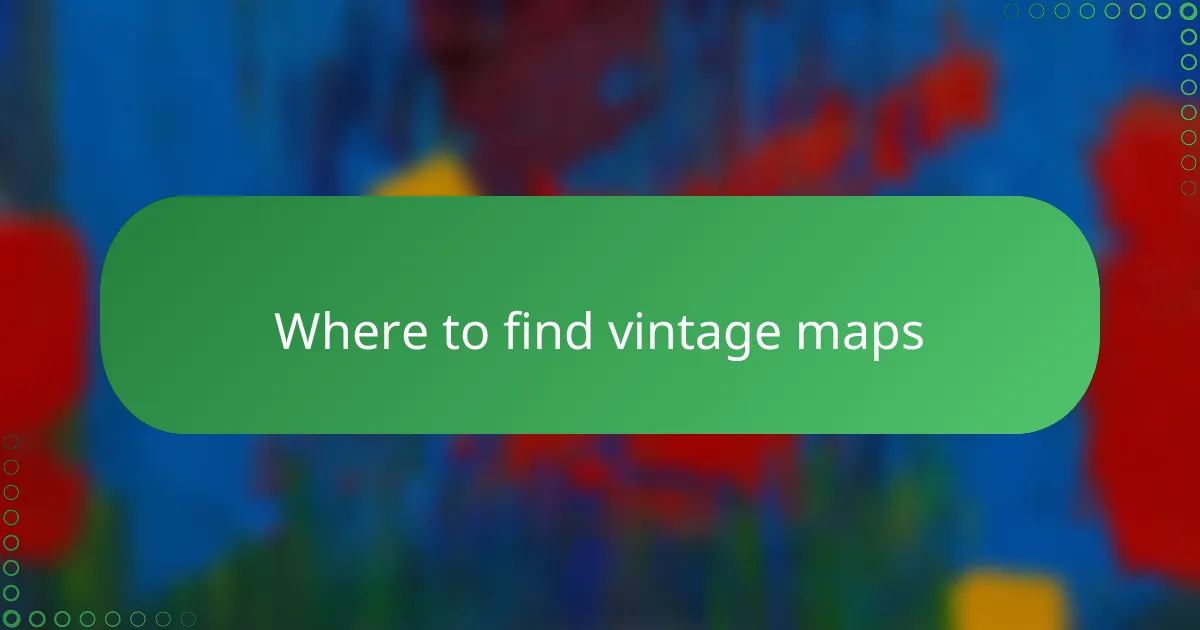
Where to find vintage maps
One of my favorite ways to find vintage maps has been browsing local antique shops. There’s something thrilling about sifting through piles of old books and papers, wondering which hidden gem might be waiting for me. Have you ever stumbled upon a map that instantly sparked your imagination among seemingly random items?
Online auctions and marketplaces are another treasure trove. I remember searching late into the night, scrolling through countless listings until I found a beautifully detailed map from the 1920s that felt perfect for my project. It’s amazing how a few clicks can connect you to maps from all over the world.
Libraries and archives surprised me as well. Many have digitized collections or even occasional print copies that you can study or sometimes purchase. It made me realize that some of the best resources are right in our communities, often sitting quietly on a shelf, waiting to be discovered.
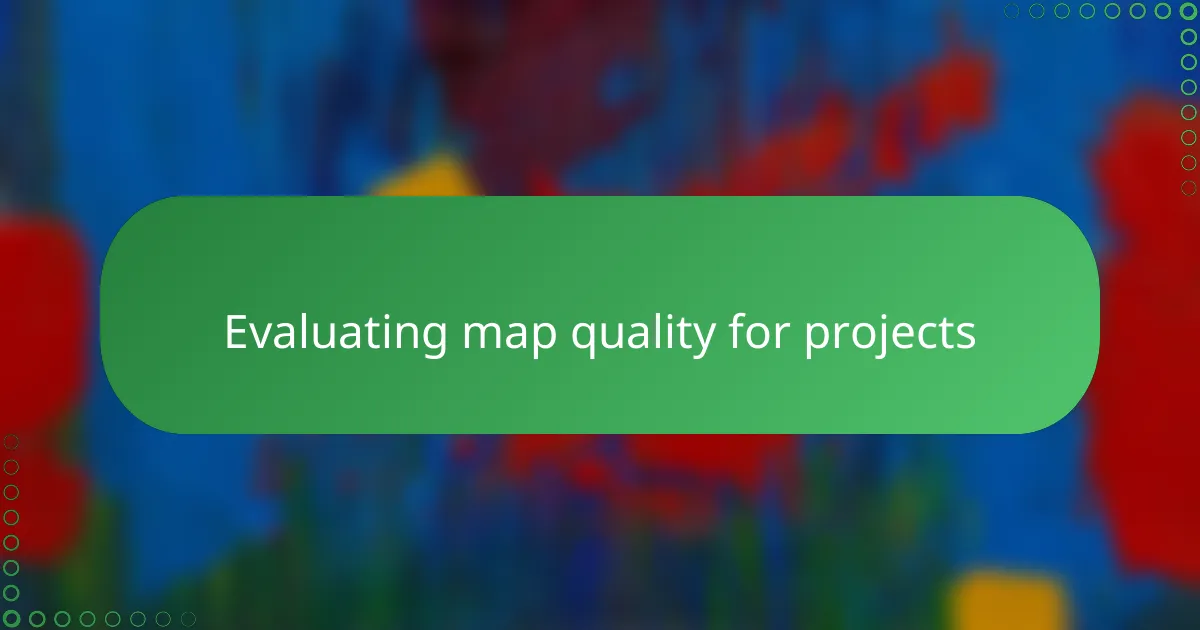
Evaluating map quality for projects
When I first started working with vintage maps, I quickly learned that checking the paper’s condition was crucial. A brittle or heavily stained map might look charming, but it could tear or crumble during crafting. Have you ever tried to fold something delicate only to see it snap? That taught me to handle each piece with gentle care and consider restoration options if needed.
The clarity of the map’s print also played a big role for me. Sharp, legible details made my designs pop, while faded lines sometimes created a beautiful, subtle backdrop—depending on the project’s mood. I often ask myself: do I want the map to stand out boldly, or serve as an understated texture? That choice shapes how I select materials.
Texture and weight surprised me as well. Heavier maps often held up better when glued or cut, while thinner ones demanded a lighter touch. I found that testing a small corner before committing helped avoid unexpected tears. Have you ever learned something new just by trying and adjusting as you go? In crafting, these small discoveries make every project unique.
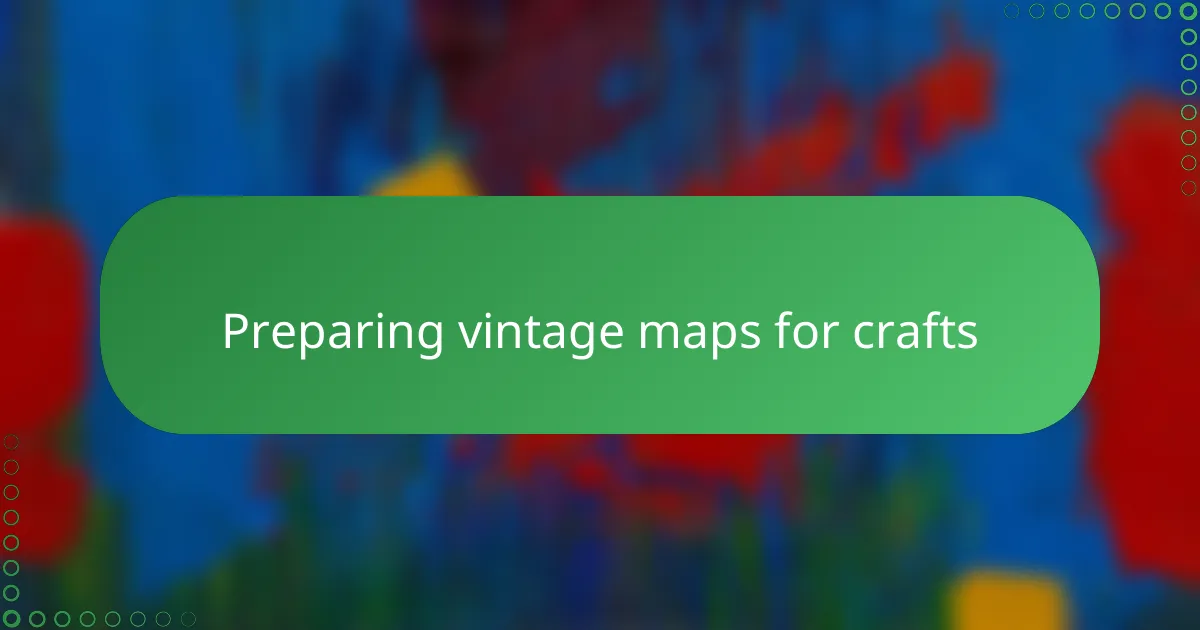
Preparing vintage maps for crafts
Before diving into crafting, I always take a moment to gently flatten the vintage maps. Sometimes, years of folding can leave stubborn creases that might interfere with precise cuts or smooth gluing. Have you ever tried working with a curled edge that just refuses to lie flat? Using a heavy book or a clean, flat surface overnight has been my go-to trick to tame those folds without causing damage.
I also learned early on that cleaning the maps delicately is essential. Dust and tiny particles might not seem like a big deal, but they can sneak under adhesives or mess with the texture. I use a soft brush or a dry cloth to lightly dust off the surface, careful not to rub away any ink. It’s a small step that makes a noticeable difference in the finished look.
Sometimes, the vintage maps I find have minor tears or fragile edges. Rather than feeling defeated, I see it as part of their unique story, but I also take care to reinforce these weak spots with archival tape or a thin layer of acid-free glue. Have you ever had to patch something precious? Those little repairs give me peace of mind and let me handle the maps confidently throughout my projects.
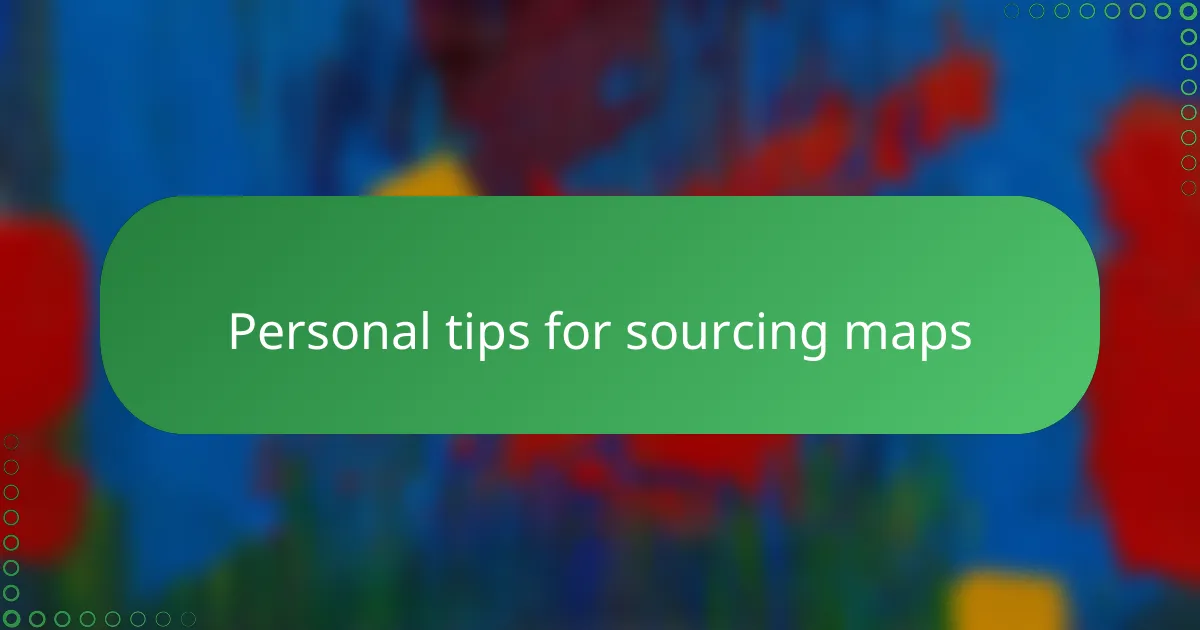
Personal tips for sourcing maps
When I first started hunting for vintage maps, I quickly realized that patience is key. Rushing through antique shops or online listings often led me to overlook hidden treasures. Have you ever waited just a bit longer and suddenly found exactly what you didn’t know you were looking for? That pause made all the difference in my map sourcing adventures.
I also learned to trust my instincts about the map’s feel and scent—sounds strange, but it helped me sense authenticity and age. Sometimes I’d hold a map up to the light or breathe in its faint, musty aroma, and that quiet moment of connection made the find feel truly special. Have you noticed how some objects just resonate with you beyond their appearance?
Lastly, I can’t emphasize enough the value of talking to sellers or shop owners. Their stories and knowledge often revealed hidden details about the maps that I wouldn’t have discovered on my own. Asking questions made the experience more personal and even guided me toward better choices. Isn’t it wonderful when a craft project starts with a meaningful conversation?
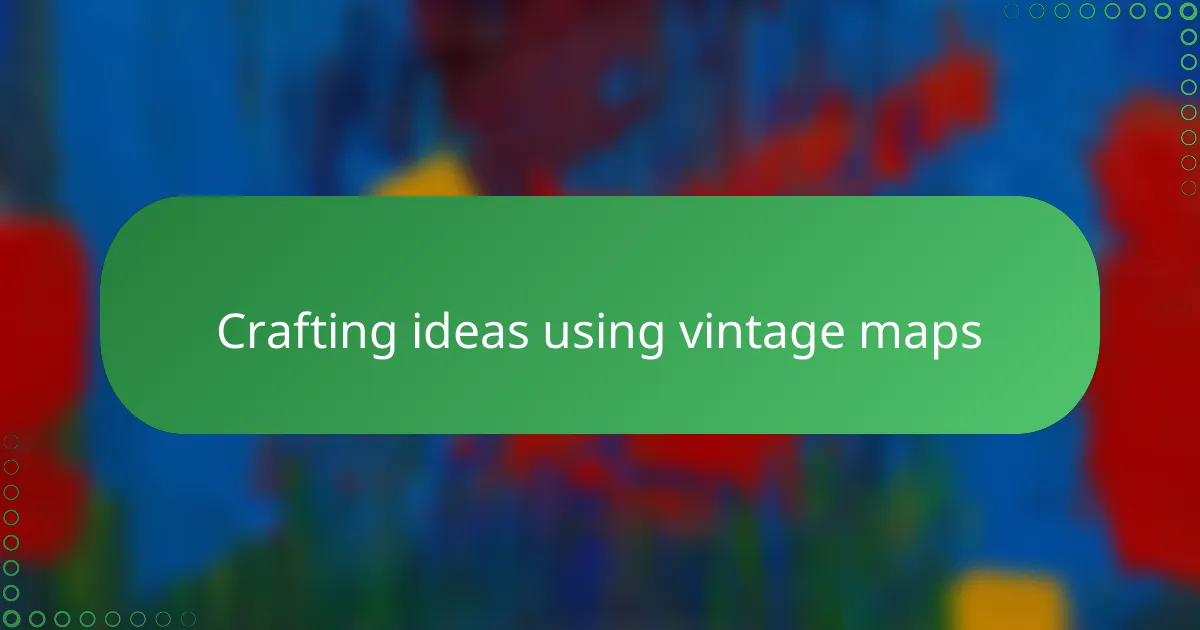
Crafting ideas using vintage maps
When I first started experimenting with vintage maps in my crafts, I was amazed at how versatile they could be. Cutting out interesting landforms or city names turned into unique gift tags, while layering map pieces created textured backgrounds that really brought my handmade cards to life. Have you ever tried letting the map’s stories guide your design choices? It feels like weaving history into every fold.
One project that stands out for me was making decoupage boxes covered entirely with vintage map snippets. The way the worn paper curled slightly at the edges gave the boxes a charming, weathered look that you just can’t get with new materials. It made me wonder—do these maps hold a little of the journeys they witnessed? Using them in crafts feels like giving those journeys a new chapter.
Maps also lend themselves beautifully to simple framed art pieces or bookmarks, especially when you focus on meaningful locations like your hometown or a fond travel spot. I remember gifting a bookmark featuring the coastline of a cherished vacation spot, and seeing the recipient’s smile made me realize just how personal and touching these crafts can be. What place on a map sparks a happy memory for you? Turning that into something handmade is pure joy.
